Jean-Michel Lorain
The specificity of my know-how is to be the result of the work of 3 generations who worked to create the restaurant Côte Saint-Jacques and make it a unique house nestled on the banks of Yonne river
Lire plusYonne is a gateway to Burgundy. When it was created, in 1790, the Department was considered to be «one of the most beautiful of the kingdom».
Until then the territory was divided into counties, baronies, bailiffs, dioceses and archdioceses. This love for Yonne’s landscapes, heritage, culture, gastronomy, vineyard, way of life… comes from the river that crosses the territory from south to north. With its tributaries, the river offers a very suitable setting for human settlement.
Dès l’Antiquité, sur les rives de l’Yonne et de ses affluents, des oppida de l’époque celte aux cités gallo-romaines, les centres urbains se multiplient et dessinent le maillage actuel du département.
Le climat et les terres facilement irrigables facilitent la mise en culture des terres et les élevages. La vigne trouve des conditions optimales de culture sur les différents coteaux du territoire. Riche de ses éléments naturels et de leur mise en valeur qui a façonné son identité, l’Yonne est devenue, au fil des siècles, un carrefour culturel, intellectuel et commercial incontournable en façonnant des paysages, un patrimoine, une culture qui constituent tout un art de vivre. Aujourd’hui, les Icaunais sont les héritiers de cette histoire et les passeurs de traditions ancestrales.
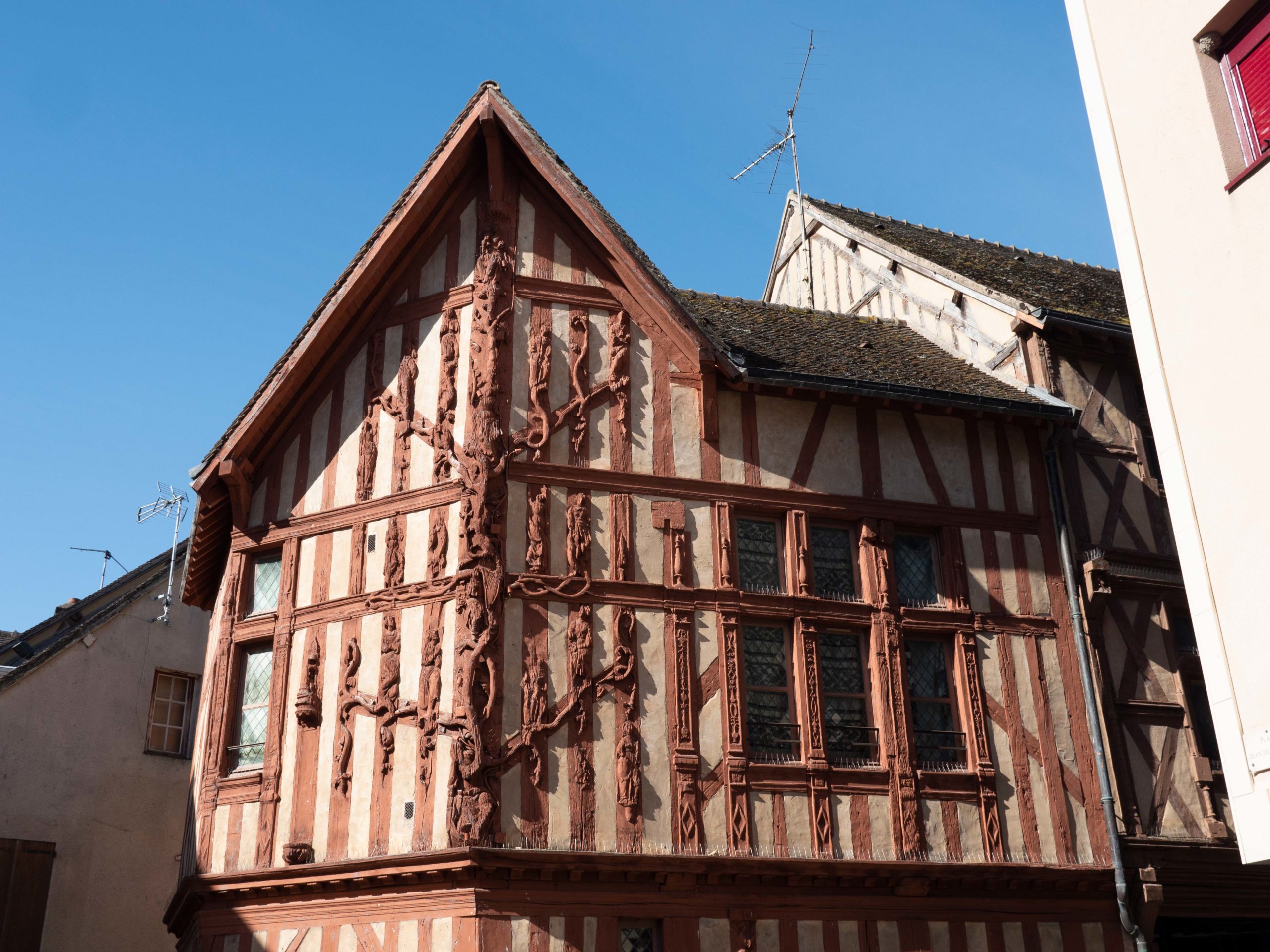
From icaunis to Icauna
The river Yonne irrigates the land and its tributary, the Cure, infiltrates the limestone in Arcy-sur-Cure. There, it digs a network of karsts that granted – between stalagmites and stalactites –shelter and protection to the Palaeolithic men. At that time, the place already inspired these hunter-gatherers. Neanderthals and homos sapiens immortalized mammoths, ibex or megaloceros in sculptures and drawings on the walls of caves. These paintings are the oldest in France accessible to the public and they are recognised as an outstanding heritage site.
Then, Celtic populations arrived from the East. They took possession of the land where they were generously welcomed by fauna and flora. They began to worship the river irrigating the fertile land on which wheat, barley and vines were grown. The Celts implored Icaunis to be merciful and not to leave his bed. During the conquest of Gaul, Roman settlers also suffered the tantrums of the river and its devastating floods. So they took back the cult of this goddess and latinised her name: Icauna to protect the new cities, Agedincum (Sens) and Autessiodurum (Auxerre), that were built along the impetuous river. The identity of the territory began to emerge around this river route, which by throwing itself into the Sequana allowed by its navigability, when it found its peace, a direct and rapid access to Lutetia promoting the transport of goods and trade.
A Roman communication hub
From then on, everything went faster. Communications routes developed and Roman roads were paved. On the banks of Icauna, Sens and Auxerre experienced a decisive economic and cultural boom. These two cities erected forums and baths. To assert its domination over the Parisian basin, an amphitheatre of 25,000 people was built in Sens to host gladiator fights and wild beasts hunting.
Gallo-Roman villae – like Sainte-Magnanc, Héry and Avrolles – began to appear along the paths that led to Rome. The cities of Fontenoy, Noyers, Migennes, Escolives-Saint-Camille, Avallon and Tonnerre developed thanks to the Roman presence benefits. Throughout the Middle Ages and under the Old Regime period, urban centres with half-timbered houses appeared and multiplied. These half-timbered facades can be admired today in Joigny, Auxerre, Noyers-sur-Serein and in many traditional villages in the department.
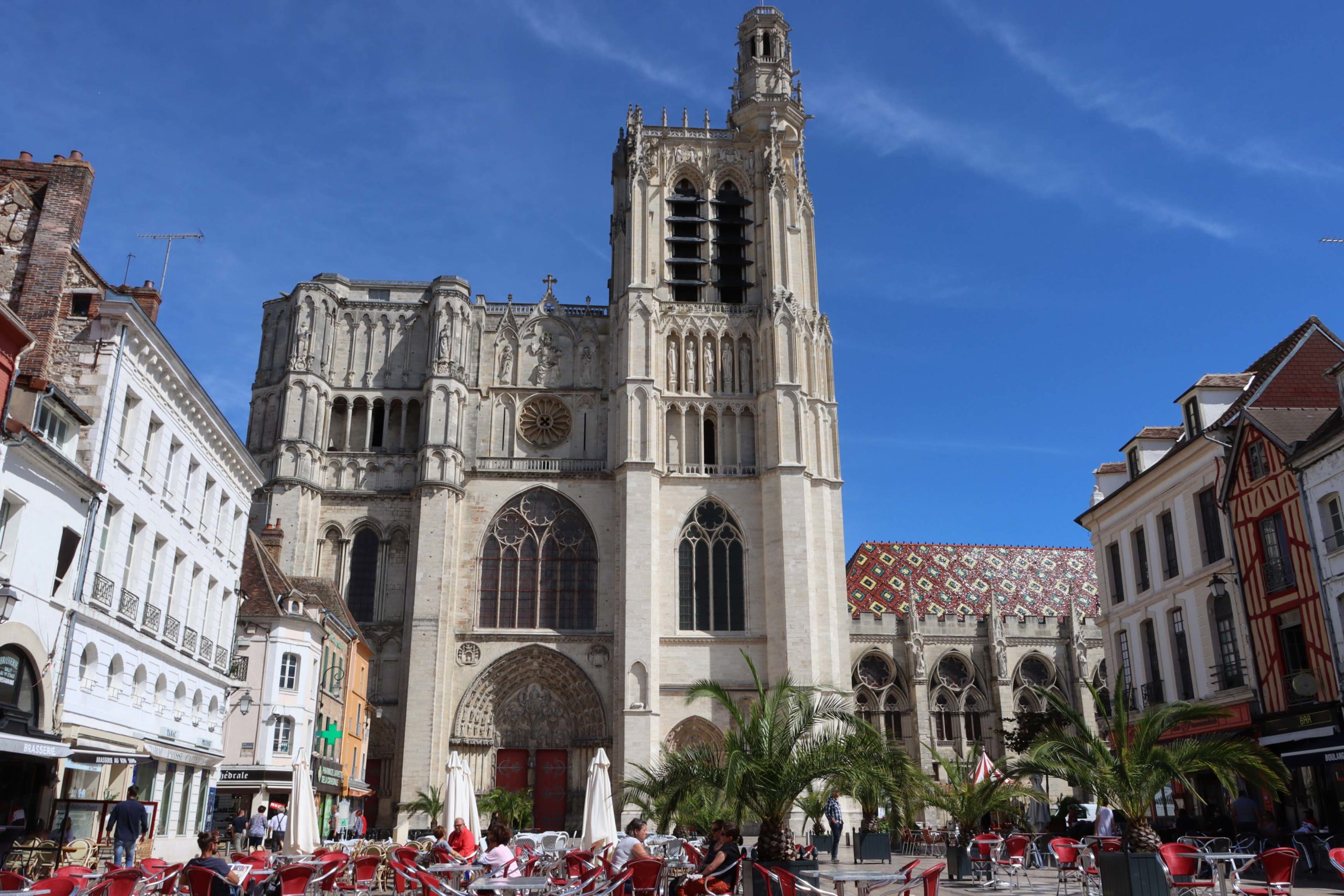
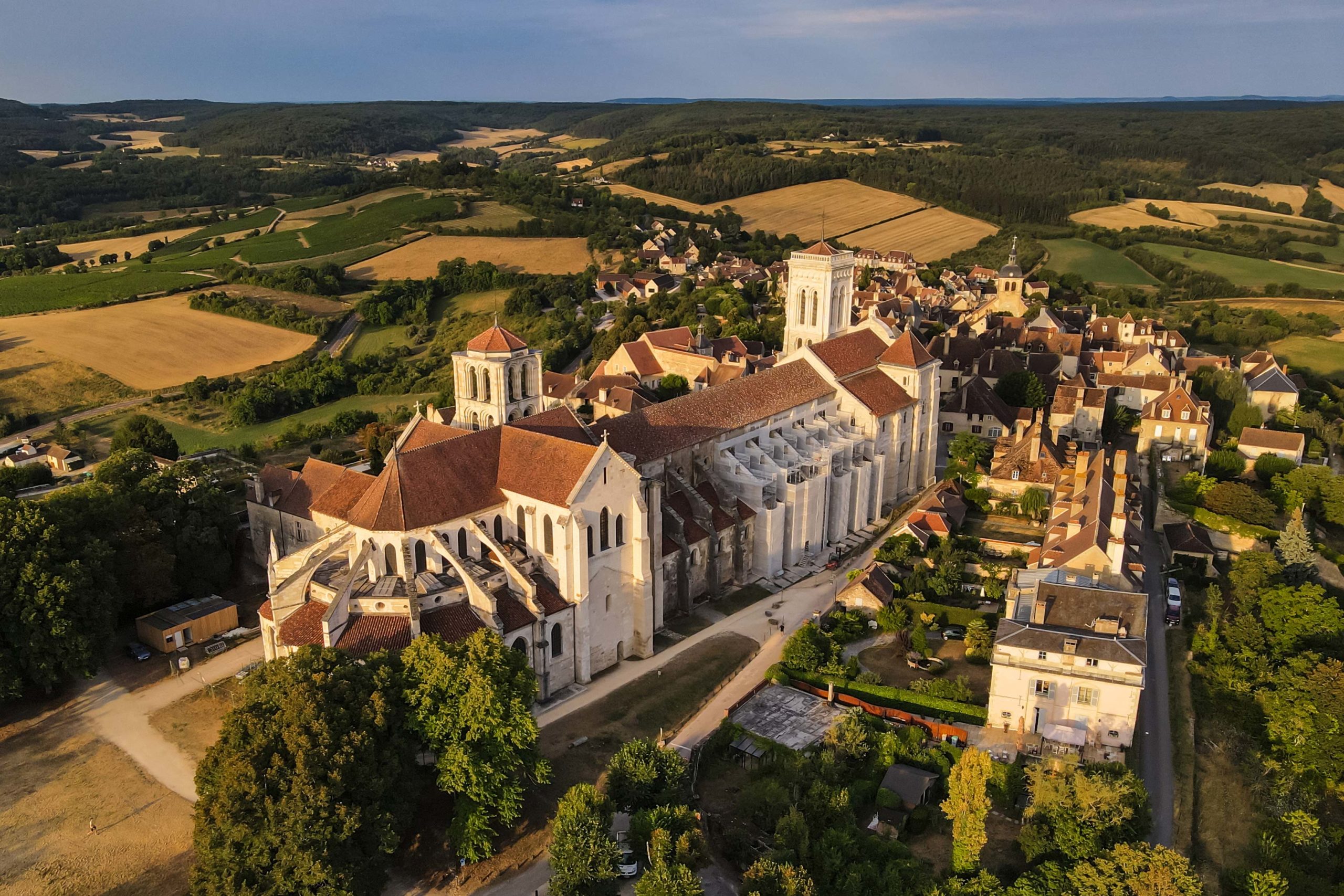
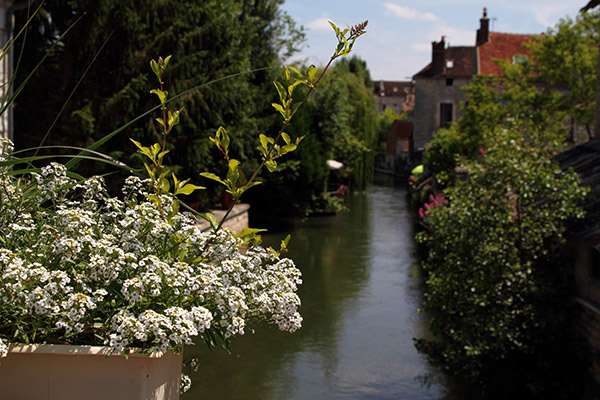
From military conquests to intellectual jousts
The territory is rich in resources and its heritage influence was increasingly growing. The land was coveted by the Burgondes, then the Francs. Because of the fall of the Roman Empire in 476, and of the wars that followed, the bishoprics, abbeys and monasteries that had spread since the IVth century, took over a failed power by offering their protection to the populations. The urban centres strengthened, and Avallon, Sens and Auxerre wanted to spread out their influence and domination beyond their walls. Thanks to Saint-Germain Abbey, Auxerre became one of the most influent intellectual centres in Europe. During the Vth century, the Archdiocese of Sens enjoyed a considerable prestige as he was at the head of the dioceses of Chartres, Auxerre, Meaux, Paris, Orléans, Nevers and Troyes.
In 858, the Abbey of Vézelay was founded. It was quickly placed under papal protection and, at the time, ecclesiastical and intellectual activity was also very intense.
The grandsons of Charlemagne set out to meet in Fontenoy-en-Puisaye, which was ideally located in the center of the Carolingian Empire. There, they engaged in a bloody fight. The battle ended with the Empire Partition Treaty signed in Verdun in 843. The current Department of Yonne and northern Burgundy were then attached to the Kingdom of Charles the Bald.
In 845, the valleys of the Yonne and of its tributaries – the Armançon, the Cure, the Serein, the Vanne – were very coveted. The area suffered the assaults of the Normans. Finally, the Count of Auxerre and Sens, Richard of Burgundy, repelled the Normans who raided towns, villages and countryside. As a reward, Richard was allowed to merge his counties. He was granted the title of Marquis of Burgundy then of Duke. The new Duchy of Burgundy rapidly gained power and a frontal competition with the Kingdom of France began. Located on river and land roads linking Paris to Lyon and Marseille, Yonne took advantage of controlling this strategic position.
If the Senonais was initially linked to the royal domain, Avallon and Auxerre regions had to suffer wars between the royal domain and the Duchy of Burgundy. In the 11th century, Sens became part of Burgundy.
The time of builders
Little by little, churches and abbeys like in Pontigny were built accross the territory. From 1135 onwards, a new architectural style emerged in Sens with the building of Saint-Étienne Cathedral. Technical advances allowed to lighten the structure of the building and to dig large openings in the walls in order to enlighten the nave.
In Vézelay, a church was rebuilt on the hill. Roman art still dominated at the time on this shore of the Cure. But by the end of the 12th century, the choir was rebuilt in the Gothic style. Symbol of the advance in the Middle Ages, the Basilica of Sainte-Marie-Madeleine of Vézelay brings its visitor into the narthex, a dark space, to make it evolve in a nave then a choir of more and more light. The Basilica of Sainte-Marie-Madeleine is an architectural jewel, recognised today as a UNESCO World Heritage Site. It is still a resting place for pilgrims who have been stopping in the abbey city since the XIth century, on their way to Santiago de Compostela.
On the hillsides bordering River Yonne and its tributaries, the abbeys have been growing vines since the Roman period. In 1395, the hills of Chablis and Vézelay were grown with Chardonnay while Pinot Noir was planted in Auxerre, Irancy and Coulanges-la-Vineuse according to the orders given by Philippe le Hardi. He anticipated that the fame of his Duchy of Burgundy would, beyond military successes, be achieved by the conquest of the seigneurial and royal tables. At that time, the quality of the wines on his land improved.
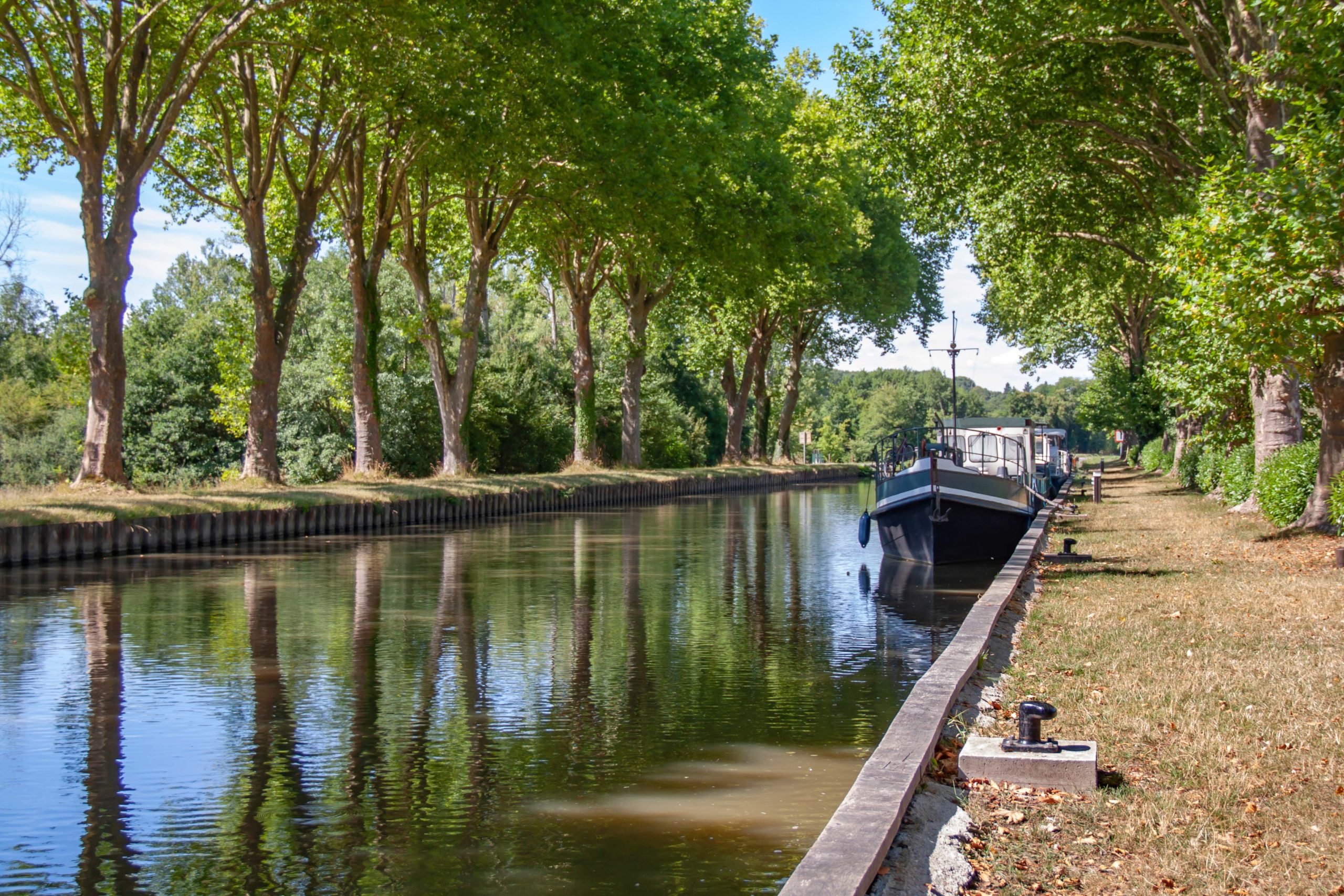
During the Renaissance, castles and churches were embellished. In the 16th century, the bishop of Auxerre and literate man, Jacques Amyot decided to take part in this architectural renewal by undertaking the renovation of the heart of the cathedral and the building of the Jesuit college, now the Lycée Jacques-Amyot.
Under the Absolute Monarchy, Yonne benefited from the development of the river transport impulsed by the royalty. On September 7, 1773, King Louis 15 decided by royal decree to build the 242 km long Burgundy Canal to connect the Seine basin to the Rhône, from Migennes to Saint-Jean-de-Lones in the Department of Saône.
Work began in 1777, between Migennes and Tonnerre and by 1832 the canal was finally open to navigation linking the Mediterranean Sea to the English Channel.
In 1784, King Louis 16 decided to build the Canal du Nivernais, which is now the second most used canal in France for boating. With its 174 km length, the canal connects the Loire to the Seine. Auxerre and Chablis wines, already shipped to Paris, were now tasted in Flanders, Prussia and Poland. The Morvan wood also benefited from the commercial opportunities created by these new river routes.
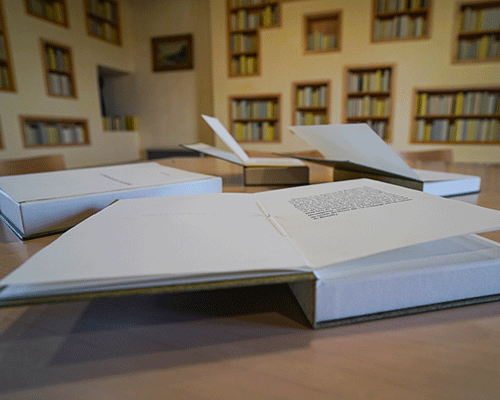
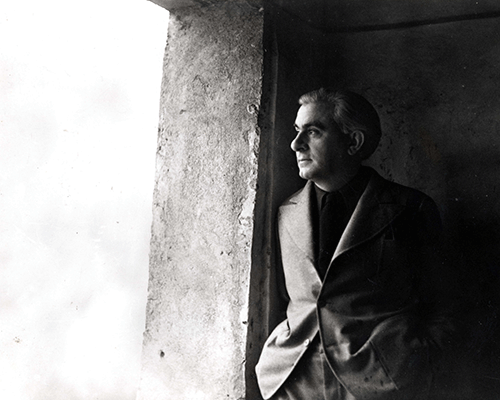
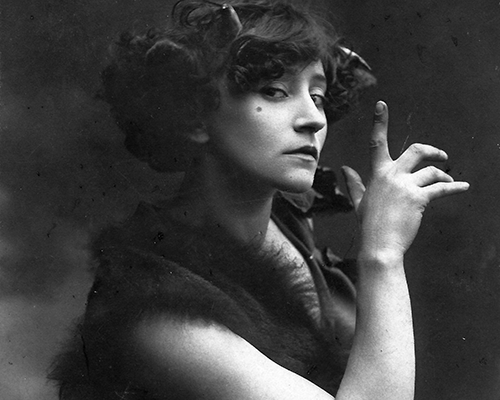
River Yonne gives its name to the department
During the Revolution, the French territory was administratively reorganized in departments. Because it already has a strong identity that radiates a whole territory, the Revolutionaries decided to keep this cultural homogeneity by drawing the limits of the Yonne. A secular identity is consecrated, a sense of belonging was born. Yonne was truly born.
However, its number fluctuates depending on revolutionary victories, Napoleonic and republican conquests. Initially numbered 84, the Department took number 89 in 1799, then 102 in 1802 before climbing to 132nd place in 1812 to finally take number 89 again in 1922.
Railway and the Industrial Revolution
In 1844, Yonne benefited from the Paris-Dijon railway layout decided by the State. Operated by the Compagnie des Chemins de Fer Paris-Lyon-Marseille, the new railway network served the cities of Laroche-Migennes, Saint-Florentin and Tonnerre. At the time, steam locomotives accelerated the transportation of passengers and goods, which allowed the industrial development of Migennes.
In 1851, Yonne population reached 381,133 inhabitants, its historic record. However, there were not enough factories to retain a youth in search of comfort, modernity and work. As the Industrial Revolution took mainly place in Paris and its suburb, Yonne population decreased because of the rural exodus. This demographic decline was amplified by the First World War, which sacrificed 30,771 inhabitants in the trenches of northern France. In 1921, there were only 273,118 inhabitants left in Yonne.
In 1905, the vicar of Saint-Étienne Cathedral, Ernest-Théodore Deschamps created a Youth Association in Auxerre. Established in 1906, its football section quickly became the best club in Burgundy. Father Deschamps himself bought a land located Route de Vaux, along the Yonne River, where a stadium was built and inaugurated in 1918.
In 1891 Paul Doumer was elected deputy of the first constituency of Auxerre. At the time, the Department was largely industrializing along the communication routes.
The future president of the Republic obtained that every Friday a session in Parliament was devoted to labour and to the condition of workers. If Paul Doumer was an adopted son of Yonne, Jean-Baptiste Bienvenu-Martin on the other hand was a child of Yonne. Under the Third Republic, he was the greatest figure of the Department. Born in Saint-Bris-le-Vineux in 1947, Bienvenu-Martin was successively deputy, senator, Minister of Public Education, Minister of Justice, Minister of Labour and Social Welfare, while holding the Presidency of the Departmental Council of Yonne from 1910 to 1940.
Homeland of artists and intellectuals
During the XIXth century, leading intellectual personalities were born in Yonne. Pierre Larousse was born in Toucy in 1817, the writer and president of the Goncourt Academy, Colette was born in Saint-Sauveur en Puisaye in 1873, the poet Marie Noël was born in 1883 in Auxerre.
In the following century, in 1902, Marcel Aymé was born in Joigny.
In 1910, journalist Paul Desjardins chose the Cistercian Abbey of Pontigny for his « Décades de Pontigny »– an event that brought together intellectuals to discuss literary, philosophical and religious topics. André Gide, François Mauriac, Antoine de Saint-Exupéry, André Malraux, Raymond Aron, Jean Paul Sartre, Paul Valéry and the British writer Herbert George Wells came for ten days each year from 1910 to 1914 and from 1922 to 1939.
Other famous people chose Yonne to find the calm and serenity needed for inspiration, such as the composer Claude Debussy who settled in Villeneuve-la-Guyard in 1901. Romain Rolland, 1915 Nobel Prize in Literature, settled in Vézelay in 1938.
Ever since Yonne has been attracting men of letters and culture. The art critic and founder of the magazine Cahiers d’Art, Christian Zervos lived in Vézelay. When he died, he bequeathed to the City of Vézelay his collection of works by Pablo Picasso, Max Ernst, Vailli Kandisky, Jean Hélion, Alexandre Calder and Joan Miro. The Department was entrusted with this impressive modern art collection and the Zervos Museum was created in the house of Romain Rolland. The writer and winner of the Renaudot Prize in 1946, Jules Roy also settled in 1978 in Vézelay – next to the Basilica – where he lived until his death in 2000.
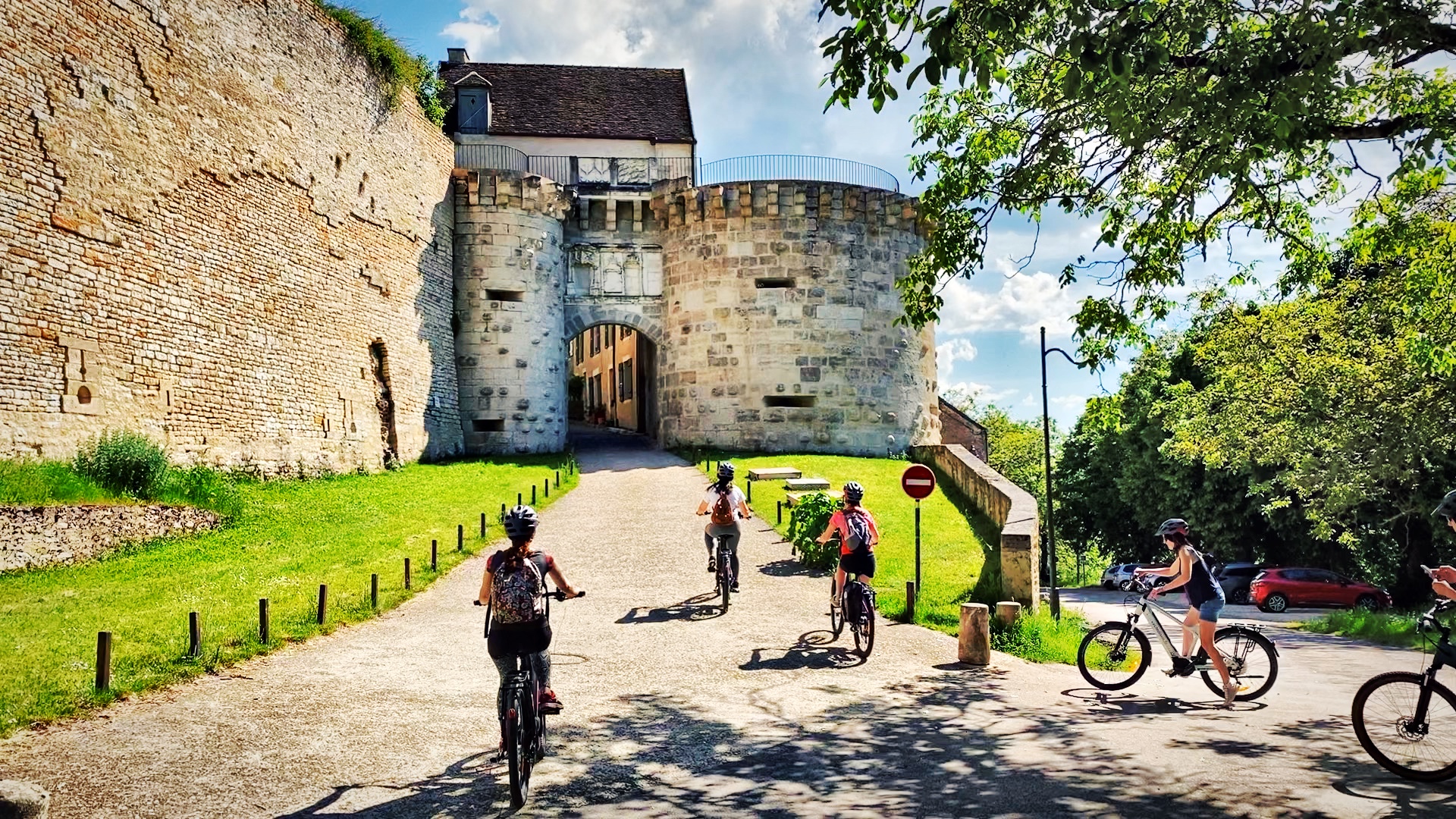

Throughout this period, Yonne vibrated to the rhythm of the A.J. Auxerre football club’s victories in blue and white. Led by coach Guy Roux from 1961 to 2005, Auxerre players won the 2nd Division championship in 1980.
After reaching the 1st division the stands of the Abbé Deschamps Stadium were modernized from 1984 and again in 1994. The club won the French Cup in 1994, 1996, 2003 and 2005.
In 1995, A.J. Auxerre reached the semi-finals of the UEFA Cup and, in 1997, the quarter-finals of the Champions League. Joël Bats, Éric Cantona, Bruno Martini, Basile Boli, Alain Roche, Laurent Blanc, Sabri Lamouchi and Djibril Cissé took part in the epic of this legendary club. In 2022, the club returned to the elite of French football after a memorable season.
Following the territorial reform of 2015, Yonne is one of the eight departments of the new Burgundy-Franche-Comté region, which resulted from the administrative merging of Burgundy and Franche-Comté.
Thanks to its rich history and privileged geographical location, Yonne is today at the crossing of roads, rivers and railways that connect Paris to the south-east of France. Recently new cycling paths have been created along the canals of Burgundy and Nivernais. They connect a developing network of bike paths. Lovers of beautiful landscapes have new routes dedicated to sustainable mobility to discover Yonne’s architectural, cultural and gastronomic treasures.
The specificity of my know-how is to be the result of the work of 3 generations who worked to create the restaurant Côte Saint-Jacques and make it a unique house nestled on the banks of Yonne river
Lire plusHe undoubtedly masters art and orality, the head of the foundation that today bears his surname. Or even repartee, not devoid of a touch of humour, when he is asked to give his definition of contemporary art, answering a shifted question from the audience!
Lire plus1600 years of history have shaped Saint-Germain Abbey as we know it today. Its construction around Germain’s tomb made it one of the brightest religious, intellectual and artistic homes in the entire Carolingian empire
Lire plusA woman of letters and a free woman, Colette was fascinating because of her talent and personality. The town of Saint-Sauveur-en-Puisaye, where she was born, dedicated her a museum and a “house-book”.
Lire plus